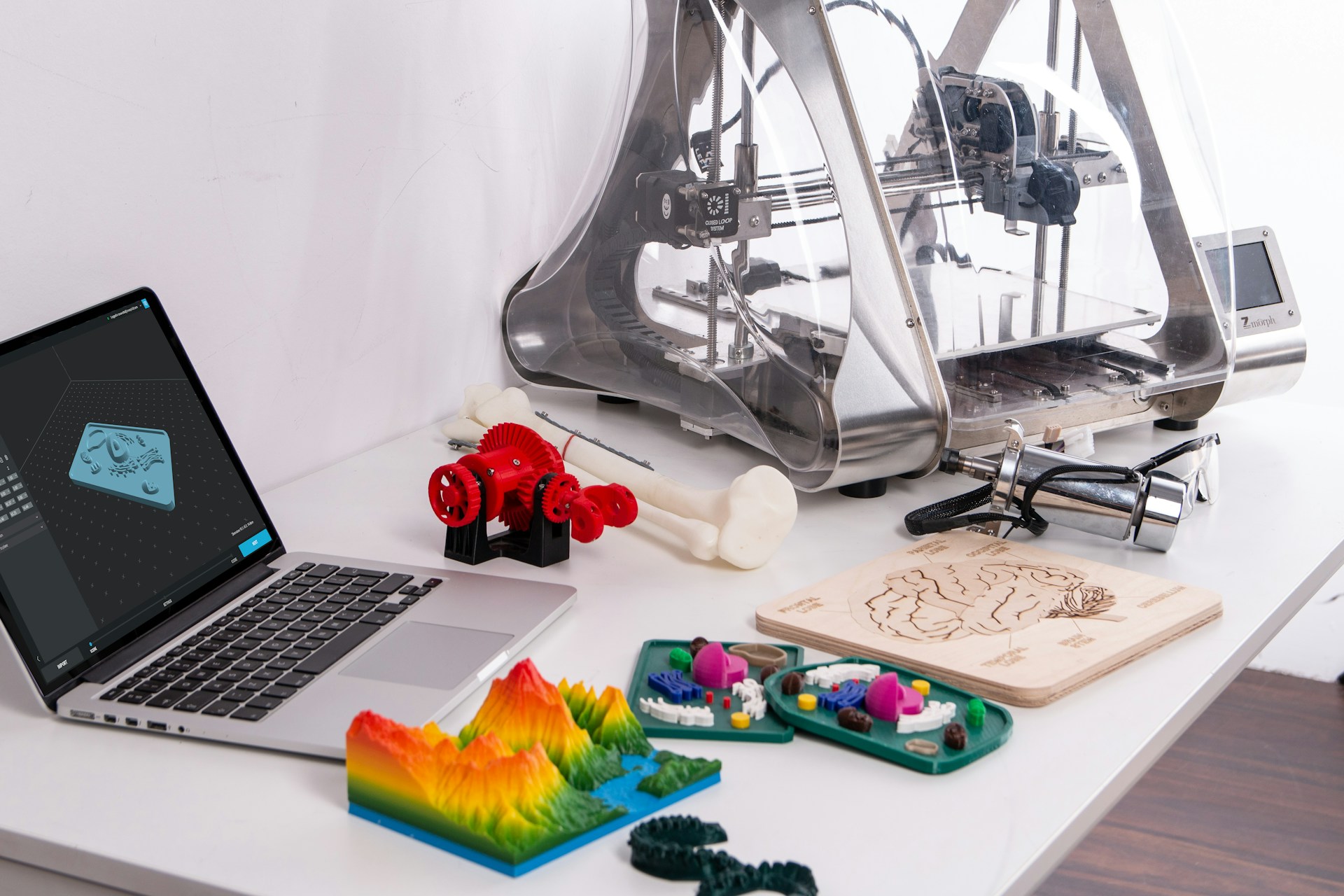Dr. Katharina Ehrmann, head of the research group at the Institute of Applied Synthetic Chemistry at TU Wien, and her team have developed a new 3D printing method that allows engineers to control a material’s structure and properties at the smallest scales. By adjusting printing parameters such as temperature and light intensity, they can determine how each microscopic region of the material behaves. The result is the ability to embed hidden patterns, such as QR codes and warning symbols, directly into printed objects; features that appear or disappear when heated to specific temperatures.
Göschl, M., Laa, D., Koch, T., Constable, E., Liu, X., Pimenov, A., Stampfl, J., Liska, R., & Ehrmann, K. (2025). Semi-crystalline and amorphous materials via multi-temperature 3D printing from one formulation. Nature Communications, 16(1), 8961. https://doi.org/10.1038/s41467-025-64092-9
This breakthrough could transform how materials are designed for data storage, authentication, and smart sensing applications.
The technique builds on photopolymerization, a process in which light hardens a liquid resin. In this method, the researchers discovered that by varying the curing temperature and light exposure during printing, the same resin can produce either a crystalline or amorphous structure. Crystalline regions tend to be harder and more opaque, while amorphous areas are softer and more transparent. The fine control over these structures makes it possible to tune mechanical and optical properties within a single print, point by point.
Dr. Katharina Ehrmann, from TU Wien stated,
“We can use different light intensities, different wavelengths, or different temperatures. All of this can be used to influence the properties of the 3D-printed material.”
Using this approach, the team demonstrated several examples of functional printing. In one case, they created a QR code hidden beneath a crystalline surface layer. At room temperature, the crystalline layer scatters light and conceals the code. When heated, the layer becomes transparent, revealing the hidden pattern. In another demonstration, a warning symbol appeared only when the temperature exceeded a specific threshold, offering potential for built-in thermal indicators that can show if a product has been exposed to unsafe heat during transport or storage.
The research team verified that transitions between crystalline and amorphous regions maintain strong adhesion and consistent structural integrity. Tensile testing confirmed that parts with alternating zones can withstand stress without delamination or cracking, showing promise for future structural applications.
This work aligns with broader research in hidden data and anti-counterfeiting techniques. Previous studies have embedded invisible QR codes within 3D-printed parts using dispersed fragments or infrared-sensitive materials. However, TU Wien’s approach stands out because it uses a single resin formulation rather than multiple feedstocks. By simply varying the printing conditions, the same printer can produce vastly different material responses, simplifying manufacturing while enabling new types of embedded information.
Challenges remain before the technology reaches industrial scale. Thermal stability is a key concern, as repeated heating and cooling cycles might degrade the contrast between crystalline and amorphous zones. Controlling temperature and light intensity with precision during high-speed printing also demands advanced feedback systems. Furthermore, not all photopolymers exhibit the reversible crystallization behavior necessary for this process, meaning material chemistry will play a major role in expanding its use.
If refined, the method could find uses in product authentication, tamper-evident packaging, temperature-sensitive labeling, and biomedical devices that respond to changes in body heat. It may even lead to structural components that store information directly within their geometry, merging physical and digital design in one step.
Dr. Ehrmann’s team collaborated with Prof. Jürgen Stampfl’s group at TU Wien and Prof. Andrei Pimenov’s team at the Institute of Solid State Physics for optical characterization.
By enabling precise material tuning at every point within a print, this research marks an important step toward 3D-printed objects that can sense, react, and even communicate through their structure alone.

Adrian graduated with a Masters Degree (1st Class Honours) in Chemical Engineering from Chester University along with Harris. His master’s research aimed to develop a standardadised clean water oxygenation transfer procedure to test bubble diffusers that are currently used in the wastewater industry commercial market. He has also undergone placments in both US and China primarely focused within the R&D department and is an associate member of the Institute of Chemical Engineers (IChemE).



